With a continued focus on our vulnerable environment, we’re taking our previous focus on venues to a more flavorful place…..the savories and sweets of your event. Aside from the location of your event, this might be the most important focus from a host’s perspective.
At a very purist level, serving food low on the food chain gets you closer to “green.” Smaller animals have a lesser environmental impact. Organically grown, local produce is at the most positive end of the eco-friendly food consumption spectrum. But, only you can determine how far to take it when planning the food and beverage offerings at your event. Here is some food for thought to consider when placing an order with your caterer (or serving as your own caterer).
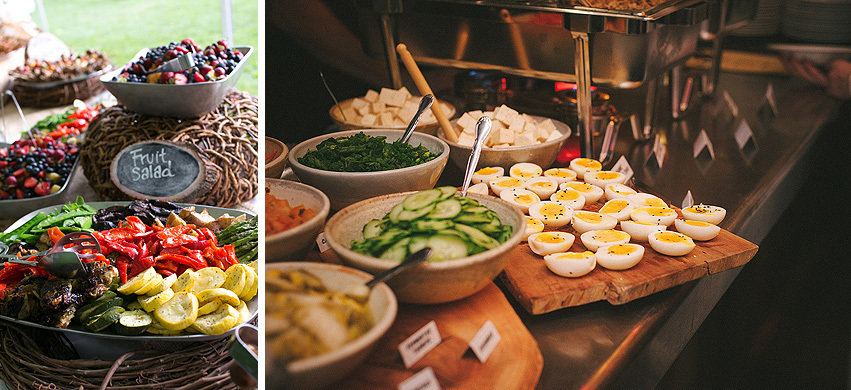
Left photo courtesy of Ashley Felkel Photography, food by Colorful Palate; right photo courtesy of WACphotography, food by Ben’s Tune Up
What time of day is your event? Morning fare is often perceived as brunch time and people come hungry, often skipping their standard bowl of cereal and coffee at home. Don’t underestimate the amount and variety of food and beverage that will be expected and consumed! Lunch requires the least amount. You want to keep it fresh and simple, as people should not feel full if your event runs into the afternoon. No surprise, dinner comes with the highest expectations. An extensive selection of mass proportions does, however, open up the possibilities for spacing it out over time, such as passed appetizers before seating and then a late night snack. The idea of pacing the offerings over a span of time can lead to smaller portions and less waste.

Photos courtesy of Camilla Calnan Photography, food by The Venue
What is the participant or guest mix? Children eat half of adult-sized portions. Teenagers will often eat more than one helping. Of course, men eat more than women generally speaking. Seniors eat less. If your event will be hosting an unusually large percentage of a particular age demographic, consider the probable impact on consumption.
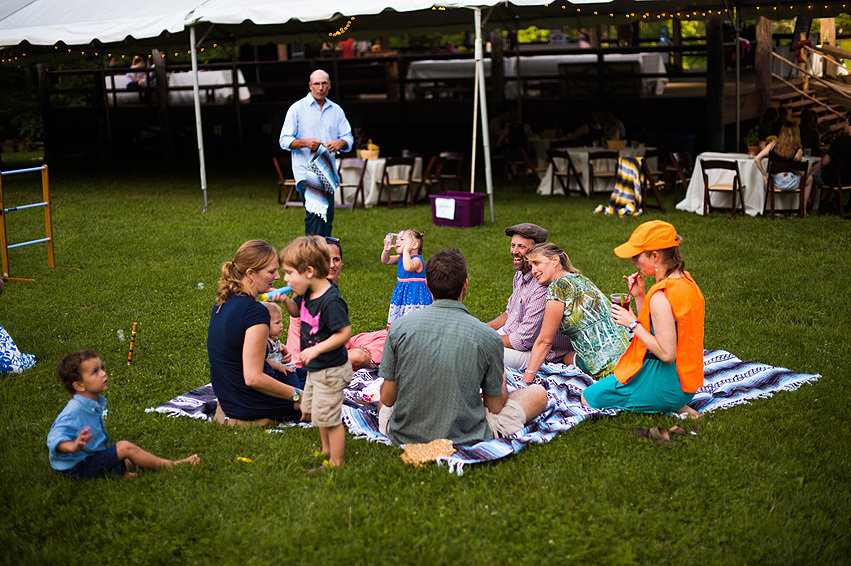
Photo courtesy of Mike Belleme
What types of food are you serving? People generally consume hors d’oeuvres at a pretty standard rate per hour. And, one of the great things about platters of food, when refrigeration is not an issue, is that the leftovers can be replated for a late night snack at or after the event.

Photo courtesy of Jennifer Callahan Photography, food by Colorful Palate
The ever-popular buffet style service comes with some unique features. Offering a bigger variety of options calls for smaller portion sizes. And, the typical scenario of leftovers leaves you with a meal for the next day!
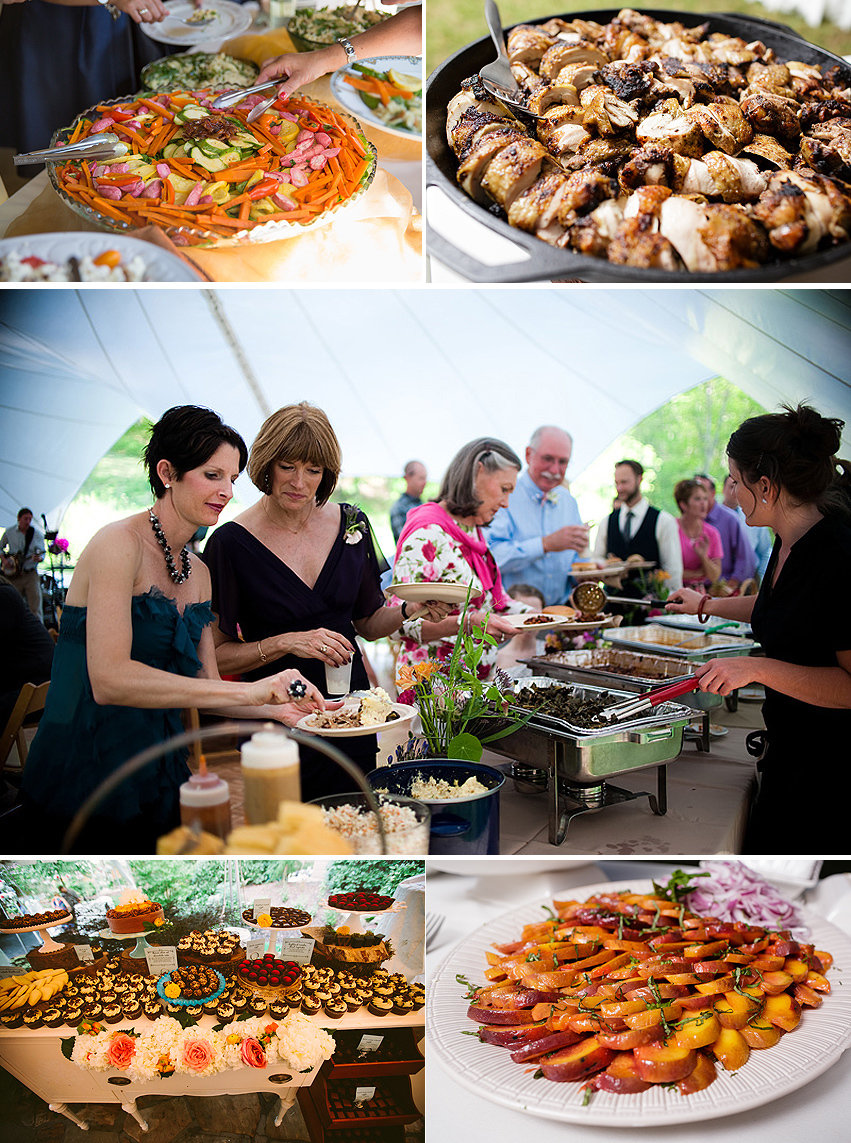
Photo 1 courtesy of Samantha Laffoon Photography, food by Celine & Company Catering; photos 2 and 5 courtesy of Sarah Rominger Photography, food by Nona Mia Market, Deli & Pizzaria; photo 3 courtesy of Mike Belleme, food by Luella’s Bar-B-Que; photo 4 courtesy of Jeremy Russell Photography, desserts by French Broad Chocolate Lounge
Plated dinners are by far the easiest for which to order, especially if you are asking folks to make a selection in advance.
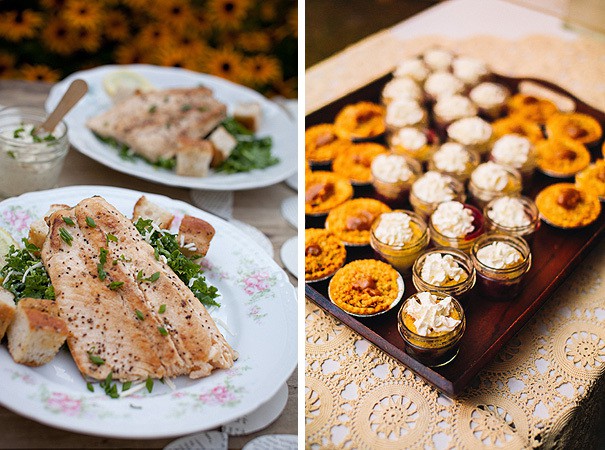
Left photo courtesy of Jennifer Callahan Photography, food by Colorful Palate; right photo courtesy of Perry Vaile Photography, food by Black Eyed Susan Catering
Bottom line, the art of ordering the right amount food and beverage to completely prevent waste or leftovers can be a lofty goal. Consider an earth-friendly or people-friendly option instead of that big trash receptacle conveniently located in the kitchen. When disposing of food materials, mother earth always appreciates composting efforts. Eco-friendly caterers such as Saffron Fine Foods offers waste disposal that includes recycling and composting that starts on-site at the event. Green Sage Cafe’ offers compostable disposables for events they cater, not to mention their wide selection of locally-grown ingredients. And, biodegradable containers can always be purchased from Jack’s Boxes.
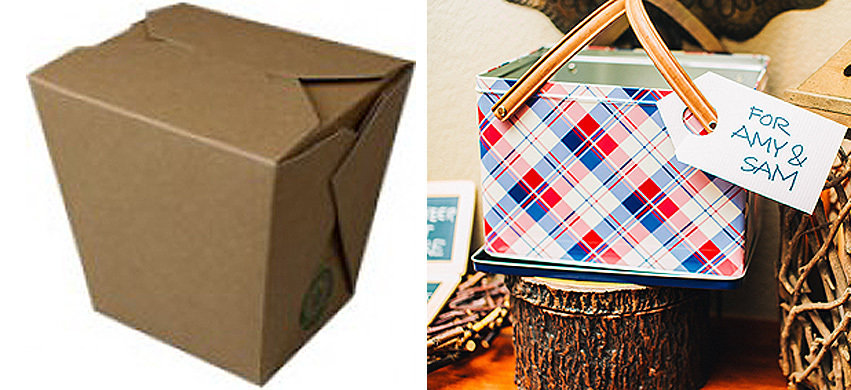
Right photo courtesy of Perry Vaile Photography
When consuming the leftovers is a possibility, advanced planning is key. Ensure that take-away containers or doggy bags are available for guests and/or staff to take perfectly good leftovers away from the venue. Ask your caterer if they provide disposable (or better yet, compostable) containers. And, make sure you have an effective way to communicate this offering near the end of your event. For larger quantities of unserved food, local health department guidelines and good samaritan laws allow for food donations to agencies serving people in need. Check with your caterer if you are interested in identifying local facilities that accept donated food. This is an ideal way to reduce food waste and ease hunger.
>>COMMENT ON THIS POST<<<